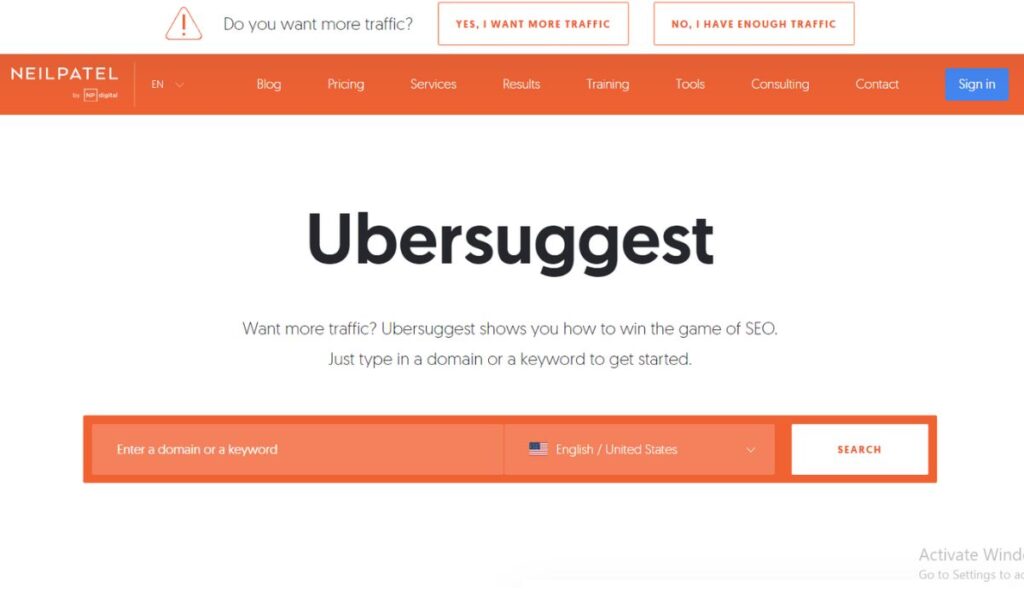Keywords are at the heart of every successful SEO strategy. However, not all keywords serve the same purpose. When it comes to optimizing your website for search engines, understanding the difference between long tail vs short tail keywords is essential. Each type of keyword brings its own benefits and challenges, and knowing when and how to use them can significantly impact your site’s traffic and conversion rates.
In this blog post, we’ll explore short-tail and long-tail keywords, explain their importance in SEO, and show you how to use them effectively for better results.
Introduction
When it comes to SEO, using the right keywords can make or break your strategy. While short-tail keywords are more general and widely searched, long-tail keywords focus on niche queries with lower competition but higher intent. In this post, we will break down the differences between these two types of keywords, compare their pros and cons, and provide actionable tips on how to use them to improve your SEO efforts.
What Are Short Tail Keywords?
Short tail keywords are broad, highly-searched terms typically consisting of one to three words. For example, “laptops,” “fitness,” and “SEO” are all short-tailed keywords. They often cover a wide range of topics and have high search volumes, but they are also highly competitive.
Key Features of Short Tail Keywords:
- Length: 1 to 3 words
- Search Volume: High
- Competition: High
- User Intent: General or broad
- Conversion Rate: Typically lower than long tail keywords
Short-tail keywords are often used to drive a large amount of traffic, but since they are so broad, the visitors they attract may not be as targeted or ready to convert.
What Are Long Tail Keywords?
Long tail keywords are more specific phrases, usually made up of three or more words. These keywords focus on niche topics or detailed queries. For example, “best SEO tips for small businesses” or “how to lose weight with yoga” are long-tail keywords.
Long tail keywords tend to have lower search volume, but they attract users who are closer to making a decision—whether it’s making a purchase, subscribing to a service, or booking a consultation.
Key Features of Long Tail Keywords:
- Length: 3 or more words
- Search Volume: Low to medium
- Competition: Low
- User Intent: Specific
- Conversion Rate: Higher than short tail keywords
These keywords are incredibly useful for targeting a specific audience that is looking for precise information or ready to take action.
Comparison
Here’s a quick comparison of short-tail and long-tail keywords to help clarify their differences:
| Aspect | Short Tail Keywords | Long Tail Keywords |
|---|---|---|
| Length | 1-3 words | 3+ words |
| Search Volume | High | Low to medium |
| Competition | High | Low |
| User Intent | Broad/general | Specific/niche |
| Conversion Rate | Low | High |
| Example | “Running shoes” | “Best running shoes for flat feet” |
When to Use Short Tail Keywords
Short-tail keywords are ideal for driving general traffic to your website. Use them when:
- You want to increase brand visibility.
- You’re focusing on a wide audience.
- Your website has high domain authority and can compete for popular terms.
However, be aware that the traffic may not always convert into leads or sales because users searching for broad terms might still be in the early stages of their search journey.
When to Use Long Tail Keywords
Long tail keywords work best when you’re trying to attract a specific audience or achieve higher conversion rates. Use them when:
- You want to target a niche audience.
- You aim to capture users with specific intent (e.g., looking for product reviews, tutorials, or in-depth information).
- You want to rank higher for less competitive terms.
Since long-tail keywords cater to more precise queries, they are particularly useful for businesses seeking qualified leads.
Advantages and Disadvantages of Short Tail Keywords
Advantages of Short Tail Keywords:
- High Visibility: These keywords are searched frequently, helping to bring in a lot of traffic.
- More Traffic Potential: You can attract a larger audience by targeting general, widely searched terms.
Disadvantages of Short Tail Keywords:
- High Competition: It’s challenging to rank for these keywords because so many websites are competing for them.
- Lower Conversion Rate: The traffic you generate may not be as targeted, leading to fewer conversions.
- Advantages and Disadvantages of Long Tail Keywords
Advantages of Long Tail Keywords:
- Low Competition: These keywords are more niche, making it easier to rank for them.
- Higher Conversion Rates: Since users searching for long tail keywords usually have specific intent, they’re more likely to take action.
Disadvantages of Long Tail Keywords:
- Lower Search Volume: These keywords don’t bring in as much traffic as short-tail keywords.
- Requires More Research: Identifying effective long-tail keywords can take more time and effort.
How to Find Short Tail and Long Tail Keywords
Finding the right mix of short and long-tail keywords is key to an effective SEO strategy. Here are some methods:
- Use Keyword Tools: Tools like Google Keyword Planner, Ubersuggest, and Ahrefs can help you find relevant keywords. You can analyze search volumes, competition, and trends for both types of keywords.
- Analyze Competitors: Look at the keywords your competitors are ranking for. This can help you identify valuable short-tail and long-tail keyword opportunities.
- Search Suggestions: When typing a keyword into Google, pay attention to the suggestions. These are often long-tail keywords that users are searching for.
Short Tail Keywords and Long Tail Keywords in SEO Strategy
An ideal SEO strategy incorporates both short-tail and long-tail keywords. Short-tail keywords can drive large amounts of traffic, while long-tail keywords help with conversions. Here’s how to balance them:
- Start Broad, Narrow Down: Use short tail keywords in broad sections of your site, like homepage and category pages. Then, use long tail keywords in specific blog posts or service pages that focus on niche topics.
- Create Comprehensive Content: Build content that answers broad questions, but also dives deep into specific queries. This way, you can rank for both types of keywords.
Case Study: Success with Long Tail Keywords
Let’s take an example of an online store selling fitness gear. Instead of targeting the broad term “fitness gear,” they targeted long-tail keywords like “best fitness gear for women over 50.” This specific phrase has lower competition but attracted highly qualified visitors who were more likely to purchase. As a result, their conversion rate increased by 20%, proving that long-tail keywords can lead to better ROI when used correctly.
Conclusion
Understanding the differences between long tail vs short tail keywords is essential for creating an effective SEO strategy. While short-tail keywords can drive more traffic, they come with high competition and lower conversion rates. On the other hand, long tail keywords offer higher conversion potential with less competition, but they require more research and focus on niche topics.
By combining both types of keywords, you can attract a large audience and ensure that your site is also tailored for more specific, high-intent searches. This balanced approach will help you optimize your website for better rankings, traffic, and conversions.
FAQs
1. What are short-tail keywords?
Short tail keywords are broad search terms consisting of one to three words. They typically have high search volume and attract a large audience, but they come with high competition and lower conversion rates. Examples include “shoes” or “SEO tips.”
2. What are long tail keywords?
Long tail keywords are longer, more specific phrases that usually consist of three or more words. They target niche audiences with specific search intent. Long tail keywords have lower search volume but offer higher conversion rates. Examples include “Best running shoes for flat feet” or “How to do SEO for a small business.”
4. Why are long-tail keywords important in SEO?
Long tail keywords are important in SEO because they target users with specific needs or questions. This helps you attract highly relevant traffic that is more likely to convert into leads or sales. They also face less competition, making it easier for your content to rank higher in search engine results.
5. How do I find long tail keywords?
You can use keyword research tools like Google Keyword Planner, Ahrefs, Ubersuggest, or SEMrush to find long tail keywords. These tools allow you to search for specific phrases and see their search volume, competition level, and related keywords.
Welcome to Digital Profit Track, sharing insighs on digital marketing, freelancing, and online earning.
Contact me at: team@digitalwsf.com




